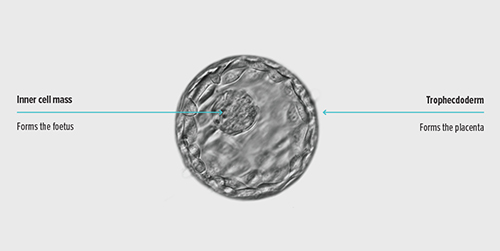 Blastocyst
Blastocyst
A blastocyst is an embryo which is a complex cellular structure formed by approx 200 cells. The blastocyst phase is the development stage before implantation of the embryo in the female’s uterus. Culturing embryos to the blastocyst transfer stage is highly dependent on both the intrinsic potential of the individual embryo, and the quality and capability of the lab.

Blastocyst transfer is part of advances in fertility techniques. Blastocysts are advanced embryos that have a higher chance of implantation than earlier-stage embryos. Developing embryos are allowed to grow uninterrupted for five days until they form the blastocyst stage of development. A blastocyst is a highly developed embryo and ready to attach to the uterine wall. This attaching is also known as “implantation.” Blastocyst culture is a technique developed for in vitro fertilization (IVF). This procedure is proposed to increase pregnancy rates while reducing the risk of multiple pregnancies by choosing the best embryo to transfer.
